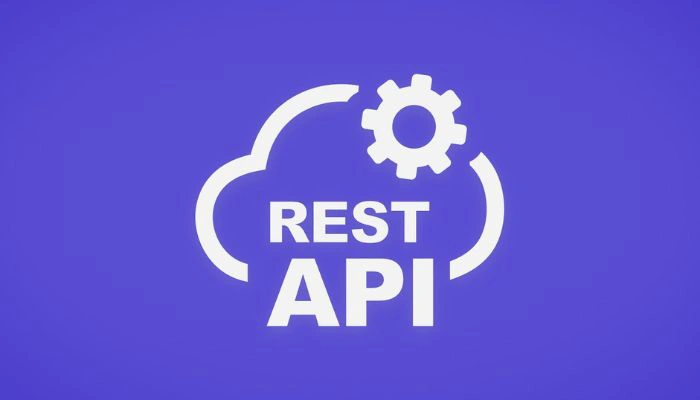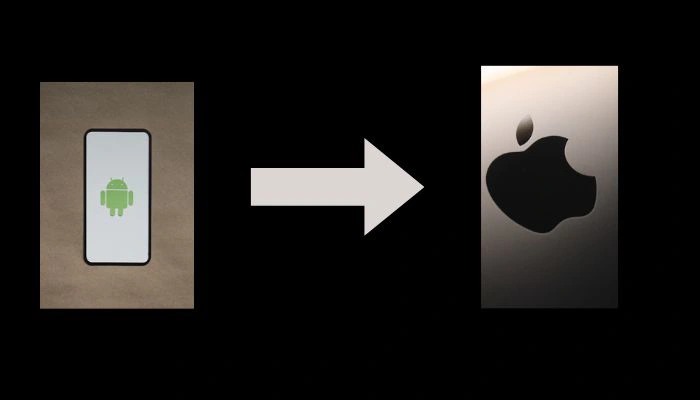What is .NET Framework: .Net Programming Explained
Frameworks are the foundational pillars that simplify complex tasks, accelerate development cycles, and ensure applications are robust and secure. From building intricate desktop applications to powerful web services and mobile apps, developers need a reliable and comprehensive set of tools to bring their ideas to life. This is where the concept of a software framework becomes not just useful, but essential, providing a pre-built structure that handles many of the low-level details, allowing developers to focus on what truly matters: the unique logic and features of their applications.
The .NET Framework is one such cornerstone of the development world, a proprietary software framework created by Microsoft that has been a dominant force for over two decades. It provides a complete and consistent environment for building, deploying, and running applications primarily on the Windows platform. The framework is not just a collection of libraries; it’s an entire ecosystem that includes the Common Language Runtime (CLR), which manages code execution, and the Framework Class Library (FCL), a vast collection of reusable code. This powerful combination makes .NET programming an incredibly efficient and versatile approach for creating a wide range of software solutions.
This guide will take a deep dive into the .NET Framework, explaining its core components, key features, and the vast array of applications you can build with it. We will explore how it has shaped the landscape of modern software development and address some of the most common questions surrounding its purpose and usage. Whether you are a new developer looking to get started or a business leader considering the best technology for your next project, this comprehensive overview will provide the clarity and insights you need.
What is the .NET Framework and Its Core Components?
The .NET Framework is a unified and extensive development platform for building, deploying, and running applications. At its heart, it’s a managed execution environment that simplifies the development process by providing crucial services such as security, memory management, and exception handling. It was a revolutionary concept at its inception, designed to solve common programming problems like "DLL Hell" and versioning conflicts by providing a structured and managed environment. The framework's architecture is a testament to its design for efficiency and robustness.

The two main components that form the backbone of the .NET Framework are:
- The Common Language Runtime (CLR): Think of the CLR as the engine that powers all .NET applications. It is responsible for executing the code and providing a secure and managed environment. The CLR handles critical tasks such as Just-In-Time (JIT) compilation, which converts the intermediate code into native machine code at runtime, garbage collection for automatic memory management, and code access security to enforce permissions. Its role is to ensure that applications run smoothly, securely, and efficiently, regardless of the language they were written in.
- The Framework Class Library (FCL): The FCL is a massive, object-oriented collection of reusable types, classes, interfaces, and methods. It is the developer's toolbox, providing pre-written code for a wide variety of common programming tasks. Instead of writing code from scratch for things like file I/O, database connectivity (ADO.NET), or web services (ASP.NET), developers can simply use the classes provided in the FCL. This not only saves an immense amount of time but also ensures consistency and reliability in the application development process.
How Does the .NET Framework Work with Different Languages?
One of the most powerful features of the .NET Framework is its support for multiple programming languages. This is made possible by the Common Language Infrastructure (CLI) and the Common Type System (CTS). When a developer writes code in a .NET-supported language like C#, VB.NET, or F#, the language compiler doesn't convert it directly into machine code. Instead, it compiles the code into an intermediate language called Common Intermediate Language (CIL).
This CIL code is then executed by the Common Language Runtime (CLR). Because all .NET-compliant languages are compiled to the same CIL, they are fully interoperable. A component written in C# can seamlessly interact with a component written in VB.NET. This cross-language interoperability promotes code reuse and collaboration among development teams, regardless of their preferred language. The CLR then uses a Just-In-Time (JIT) compiler to convert the CIL into native machine code just before execution, which provides excellent performance.
Key Features That Make .NET Framework a Powerful Choice

The enduring popularity of the .NET Framework is a direct result of its powerful features designed to simplify development and enhance application quality. These features have made it a preferred platform for building enterprise-level applications.
- Language Interoperability: As explained above, the CLI and CTS allow developers to use code written in one .NET language within an application built with another, fostering a collaborative and flexible development environment.
- Automatic Memory Management: The CLR includes an automatic garbage collector that manages the allocation and release of memory. This prevents memory leaks and other common errors, allowing developers to focus on writing application logic instead of manual memory management.
- Robust Security Model: The framework provides a comprehensive security model, including Code Access Security (CAS), which grants or denies permissions to code based on its origin, and role-based security, which authenticates users and roles. This makes it easier to build secure applications from the ground up.
- Simplified Deployment: .NET applications can be easily deployed with features like "no-impact" applications, private components, and side-by-side execution, which resolves versioning conflicts and simplifies updates.
- Rich Class Library: The Framework Class Library (FCL) offers an enormous collection of pre-built classes and APIs for everything from data access and networking to user interface (UI) development, significantly reducing development time.
- Integration with Microsoft Technologies: The .NET Framework seamlessly integrates with other Microsoft products and services, such as SQL Server, Microsoft Azure, and Visual Studio, creating a cohesive ecosystem for development.
The Evolution of .NET: From Framework to Core and Beyond
While the .NET Framework was traditionally a Windows-only platform, Microsoft recognized the need for cross-platform support. This led to the development of .NET Core, a modern, open-source, and cross-platform version of the framework. Launched in 2016, .NET Core was designed for building modern cloud-based and microservices-oriented applications that could run on Windows, macOS, and Linux.

The introduction of .NET Core was a significant shift, bringing better performance, a modular design, and a more streamlined development process. Recognizing the need to unify its development platforms, Microsoft announced the consolidation of .NET Framework and .NET Core into a single, unified platform starting with .NET 5. This new platform, now simply called .NET, represents the future of Microsoft's development ecosystem, offering the best of both worlds: the extensive features of the original framework and the cross-platform capabilities of .NET Core.
Key Differences between .NET Framework and .NET Core
| Feature | .NET Framework | .NET Core / .NET (5+) |
| Platform | Windows-only | Cross-platform (Windows, macOS, Linux) |
| Development Model | Primarily for traditional desktop and web apps | Modern, cloud-native, and microservices-oriented |
| Open Source | Proprietary | Open source and community-driven |
| Performance | Good, but generally slower than .NET Core | Faster startup times and higher performance |
| APIs & Libraries | Extensive, includes Windows-specific APIs (WPF, Windows Forms) | Subset of APIs, modular design for a smaller footprint |
| Versioning | Side-by-side execution for different versions | Single version on a machine (per application) |
What Can You Build with .NET? Common Applications and Industries
The versatility of the .NET Framework and its successors means it can be used to build a wide range of applications across various industries. Its robustness and scalability make it an excellent choice for everything from small business solutions to large, complex enterprise systems.
Desktop Applications
The .NET Framework has been a dominant force in building rich desktop applications for Windows. Technologies like Windows Presentation Foundation (WPF) and Windows Forms (WinForms) provide developers with the tools to create stunning and highly functional user interfaces. Many well-known enterprise desktop applications are powered by this technology, handling everything from inventory management to financial analysis.
Web Applications and Services
ASP.NET, a part of the .NET ecosystem, is a popular web application framework for building dynamic websites, web APIs, and web services. It provides a robust and secure environment for developing scalable web solutions. Major companies, including Dell, GoDaddy, and Stack Overflow, have used .NET for their web platforms, a testament to its reliability and performance.
Gaming Applications
The gaming industry also leverages the power of .NET. The Unity game engine, one of the most widely used engines for both 2D and 3D games, uses C# as its primary scripting language. This means that a massive number of popular games for mobile, PC, and console are powered by the principles of .NET programming.
Other Applications
Beyond these primary categories, .NET programming is used in many other areas, including:
- Internet of Things (IoT): For creating applications that communicate with and control connected devices.
- Mobile Development: Using frameworks like Xamarin and now .NET MAUI (Multi-platform App UI) to build native mobile apps for Android and iOS with a single codebase.
- Business Intelligence (BI): Building powerful data analysis and reporting tools.
- Financial Applications: Developing secure and high-performance trading platforms and banking software.
- Enterprise Resource Planning (ERP): Creating large-scale systems for managing business operations.
Conclusion
The .NET Framework has a rich history as a pioneering development platform that simplified software creation and established a new standard for managed code. While the ecosystem has evolved to embrace cross-platform development with the unified .NET platform, the core principles of the original framework—its managed execution environment, extensive class library, and language interoperability—remain as relevant as ever. For developers and businesses, embracing .NET programming means choosing a future-proof technology with a vast community, continuous innovation, and the power to build a truly diverse range of applications. Whether you’re building a simple web app or a complex enterprise system, .NET provides a robust, secure, and high-performance foundation.
Ready to harness the power of .NET Framework for your next project? Our expert team specializes in providing bespoke .NET development services to bring your innovative ideas to life.









